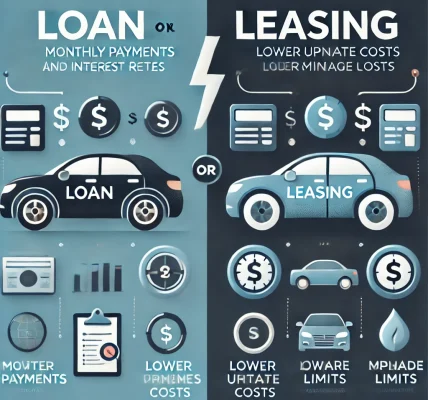Introduction
Loans play a crucial role in personal and business finance, offering individuals and organizations the financial support needed to achieve various goals. However, before taking a loan, it is essential to understand loan policies, which govern the terms, conditions, and regulations associated with borrowing money. This guide provides a comprehensive overview of loan policies, helping borrowers make informed financial decisions while ensuring compliance with legal and financial obligations.
What Are Loan Policies?
Loan policies refer to a set of rules and guidelines that financial institutions implement to regulate the lending process. These policies define borrower eligibility, loan approval criteria, repayment terms, interest rates, and penalties for default. Understanding these policies helps borrowers navigate the complexities of loans while avoiding financial pitfalls.
Key Elements of Loan Policies:
- Eligibility Criteria – Requirements for borrowers, including age, income, employment, and credit score.
- Loan Types – Personal loans, home loans, business loans, student loans, etc.
- Interest Rates – Fixed vs. variable interest rates and how they impact repayments.
- Repayment Terms – Loan tenure, EMI structure, and prepayment options.
- Penalties and Fees – Late payment charges, foreclosure penalties, and hidden costs.
- Collateral and Security – Secured vs. unsecured loans and their implications.
- Legal Compliance – Borrower rights, lender obligations, and contract terms.
Types of Loans and Their Policies
Understanding different loan types and their respective policies can help borrowers choose the right financial product. Below are common loan categories and their policy details:
1. Personal Loan Policies
- Eligibility: Requires a stable income source and a good credit score.
- Interest Rate: Typically higher due to unsecured nature.
- Repayment Terms: Flexible tenure options but may include prepayment penalties.
- Approval Time: Faster processing with minimal documentation.
2. Home Loan Policies
- Eligibility: Based on income, credit score, and property valuation.
- Interest Rate: Lower compared to personal loans; can be fixed or floating.
- Loan Tenure: Long-term (up to 30 years) with tax benefits.
- Collateral: Property itself serves as security.
3. Business Loan Policies
- Eligibility: Business financials, credit history, and stability play a role.
- Interest Rate: Depends on business creditworthiness and market conditions.
- Security: Can be secured (collateral-based) or unsecured.
- Repayment: May offer flexible repayment structures, including interest-only periods.
4. Student Loan Policies
- Eligibility: Academic records and co-borrower (parent/guardian) credibility.
- Interest Rate: Often lower, with repayment grace periods.
- Repayment Terms: Payments usually begin after course completion.
- Government Support: Some countries provide subsidized loans for students.
Understanding Interest Rates and Loan Repayment Terms
Fixed vs. Floating Interest Rates
- Fixed Rate: Remains constant throughout the tenure, ensuring stable EMIs.
- Floating Rate: Changes based on market fluctuations, impacting EMI amounts.
Loan Tenure and EMI Calculation
- Short-Term Loans: Higher EMIs but lower overall interest payout.
- Long-Term Loans: Lower EMIs but higher total interest paid.
- EMI Calculation Formula: Where:
- P = Loan Principal Amount
- r = Monthly Interest Rate
- n = Loan Tenure in Months
Hidden Charges and Fees in Loan Policies
Many borrowers overlook hidden charges, which can significantly impact the total cost of the loan. Here are some common fees:
- Processing Fees: Charged at the time of loan application.
- Prepayment Charges: Fees for early loan repayment.
- Late Payment Penalties: Extra charges for missing EMI payments.
- Administrative Fees: Miscellaneous costs related to loan management.
Legal Considerations and Borrower Rights
To protect borrowers, loan policies must adhere to financial regulations and consumer protection laws. Here are some critical legal aspects:
- Loan Agreement: A legally binding contract outlining all loan terms.
- Fair Lending Practices: Lenders cannot discriminate based on gender, race, or religion.
- Data Privacy: Borrower information must be kept confidential.
- Right to Prepayment: Some jurisdictions allow penalty-free prepayment of loans.
- Dispute Resolution: Mechanisms for handling grievances with lenders.
Tips for Borrowers: Choosing the Right Loan
- Assess Your Financial Needs: Borrow only what you can repay comfortably.
- Compare Loan Offers: Analyze interest rates, terms, and hidden costs from multiple lenders.
- Check Your Credit Score: A higher credit score improves loan approval chances and lowers interest rates.
- Read the Fine Print: Understand all terms and conditions before signing the agreement.
- Plan for Repayment: Ensure steady income sources to avoid default and penalties.
Conclusion
Understanding loan policies is crucial for making informed borrowing decisions. By knowing the types of loans available, interest rate structures, repayment terms, and legal considerations, borrowers can avoid financial pitfalls and secure loans that best suit their needs. Always conduct thorough research and seek expert financial advice when necessary to ensure a smooth and legally safe borrowing experience




